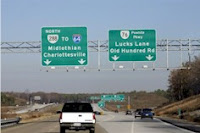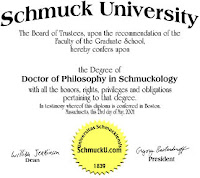As we point out in PART IV of THE PROBLEM WITH CARS, 15 May 2007 may be thought of decades from now as the ‘Ides of March’ of the Autonomobile – Large, Private Vehicles.
The week that proceeded and the week that followed the 15 th of March in 2008 may be thought of as the ‘Ides of March’ for the leveraged, securitized, subsidized Global Economy, as we knew it.
The last few days there has been a “too-numerous-to..” count, cite or link-to flood of MainStream Media coverage but there is no examination of the bottom line:
Two items get no press.
First the real cause of the current crisis. Behind (or perhaps underneath?) the current financial Enterprise meltdown is the very same problem that was the root cause of the Savings and Loan Crisis (mid-80s), the Banking Crisis / Commercial Real Estate Meltdown (late-80s to mid-90s). The problem?
Dysfunctional human settlement patterns.
We had dogs in all these fights. We also had friends who we had warned five years before they went under in every downturn since Boise Cascade was wiped out by raw land speculation in the mid 70s. Our personal, inside experience includes not just national poster children like Boise Cascade and Continental Illinois Bank but a lot of Regional ones as well.
The lesson for citizens is simple: Evolve functional settlement patterns or suffer the economic consequences.
Sure, the “cause” of the current crisis is said to be the securitized sub-prime loans and securitized credit card debt that kicked over the house of cards. There were many other sub-problems too.
However, those most who were convinced by MainStream Media ads and low initial mortgage payments to buy a $300,000 to $900,000 dollar house in the R = 25 Miles to R = 60 Miles Radius Band could have afforded a $120,000 to $500,000 dwelling in R = 2 to R = 20 Radius Band.
The cause of the Affordable and Accessible Housing Crisis is this: Agency regulation and Enterprise short term profit objectives resulted in the building the wrong size house in the wrong location. The cause of the Mobility and Access Crisis is the need to rely on Autonomobiles to get from where citizens are to where they need to be.
The second overlooked issue: The headlong rush to solve the wrong problem.
Some – the Lame Duck White House and the lame candidates who want to next occupy the White House – are pretending there is no Recession. Recent polls indicate that around 75 percent of the citizens think, and are acting as if, there is a Recession at hand With about the same percentage of the economy dependent on consumer spending, citizens and not Wall Street Titans or Federal regulators, are the ones who will make the decisions.
For most citizens, the past 10 years have been much like a recession as we point out in “Good News, Bad Reporting,” 5 March 2008.
At the same time as some some are in denial, others are focused on bailing out the leveraged, securitized, subsidized fools who got us here.
Steven Pearlstein quotes Nouriel Roubini: The current system has perfected a system of “socialized risk and privatizing gain.” E. J Dionne Jr says the Wall Street Titans have turned into “a bunch of welfare clients.”
Yes, there is a lot to be said for Groveton’s point that now that everyone in the boat is where they are, Agencies have to bail out the fat cats that caused the problem because if not far more citizens will suffer.
The point we make in “Good News, Bad Reporting” is that trying in vain to prevent a needed Recession may throw us all into a Depression.
EMR
 Yes, folks, there is a soft and gentle side to Bacon’s Rebellion — a side that is sensitive to the arts and culture in Virginia. Part of the Bacon’s Rebellion manifesto is to liberate Virginia’s artists from the cultural hegemony of the New York/Hollywood axis that determines who makes it into the Big Time and who does not.
Yes, folks, there is a soft and gentle side to Bacon’s Rebellion — a side that is sensitive to the arts and culture in Virginia. Part of the Bacon’s Rebellion manifesto is to liberate Virginia’s artists from the cultural hegemony of the New York/Hollywood axis that determines who makes it into the Big Time and who does not.






